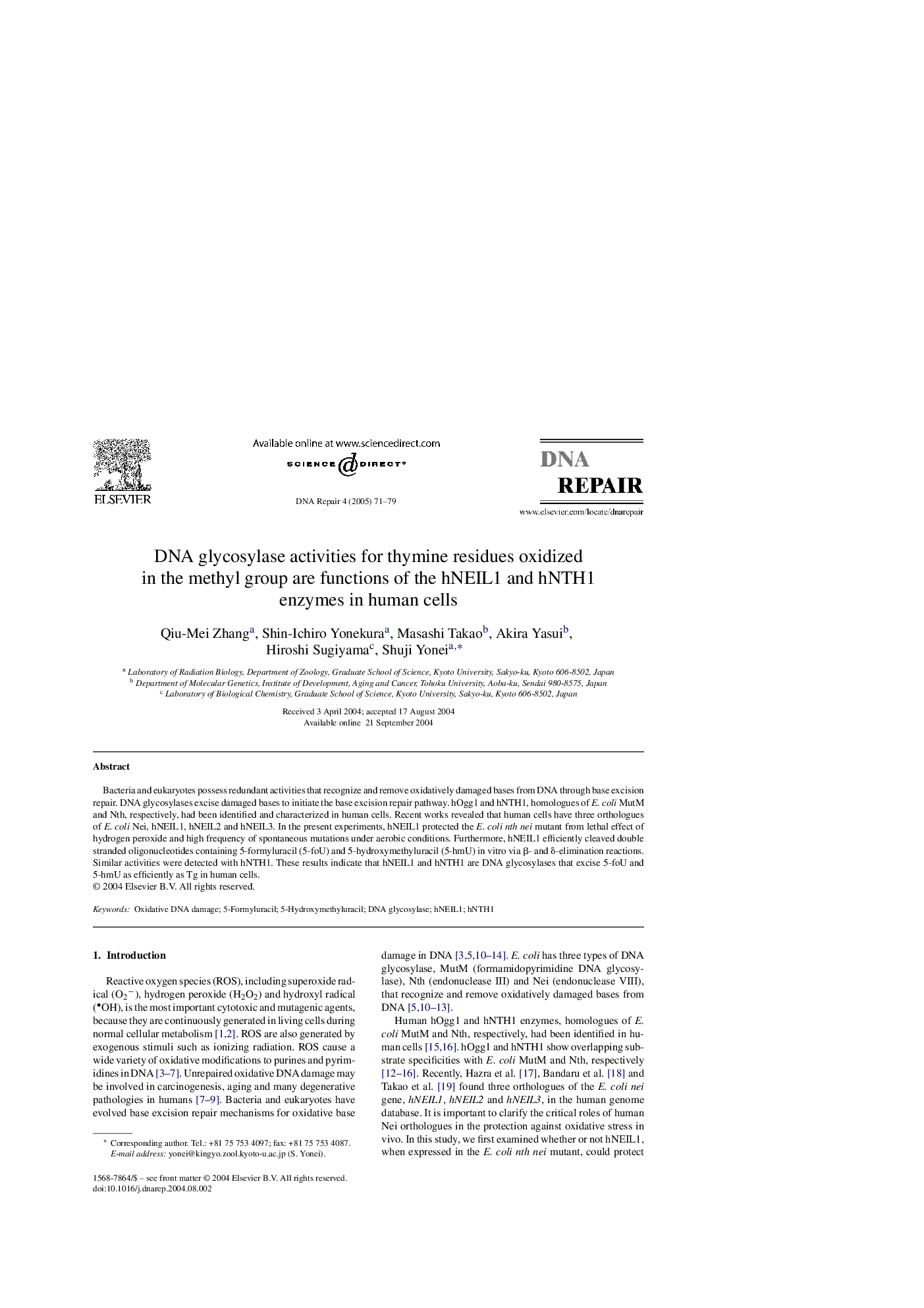| Article ID | Journal | Published Year | Pages | File Type |
|---|---|---|---|---|
| 10823708 | DNA Repair | 2005 | 9 Pages |
Abstract
Bacteria and eukaryotes possess redundant activities that recognize and remove oxidatively damaged bases from DNA through base excision repair. DNA glycosylases excise damaged bases to initiate the base excision repair pathway. hOgg1 and hNTH1, homologues of E. coli MutM and Nth, respectively, had been identified and characterized in human cells. Recent works revealed that human cells have three orthologues of E. coli Nei, hNEIL1, hNEIL2 and hNEIL3. In the present experiments, hNEIL1 protected the E. coli nth nei mutant from lethal effect of hydrogen peroxide and high frequency of spontaneous mutations under aerobic conditions. Furthermore, hNEIL1 efficiently cleaved double stranded oligonucleotides containing 5-formyluracil (5-foU) and 5-hydroxymethyluracil (5-hmU) in vitro via β- and δ-elimination reactions. Similar activities were detected with hNTH1. These results indicate that hNEIL1 and hNTH1 are DNA glycosylases that excise 5-foU and 5-hmU as efficiently as Tg in human cells.
Related Topics
Life Sciences
Biochemistry, Genetics and Molecular Biology
Biochemistry
Authors
Qiu-Mei Zhang, Shin-Ichiro Yonekura, Masashi Takao, Akira Yasui, Hiroshi Sugiyama, Shuji Yonei,
